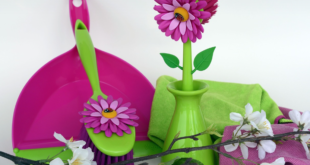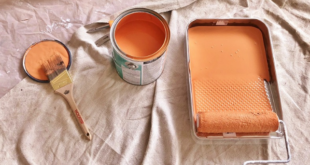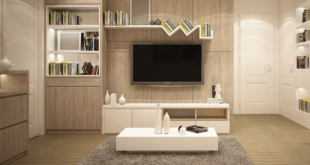Classic films and TV series are great places to look for design inspiration. Interior design is an integral part of the narrative, revealing characters’ personalities and psychology and furthering the atmosphere on camera. It’s no different with your home – your interior design style should create an atmosphere that’s pleasing to you and reflect your personality. But some of the interior design choices we see on screen are better than others.
Interior decorating tools provider Harris Brushes has explored its most and least favourite on-screen interior design trends that you can use as guidance before you switch up your interior design style.
Key findings
- Some of the best interior design styles are opulent 18th century French, early noughties eclecticism, relaxed glamour, cottage-core, art deco and contemporary influences paired with delicate, old-world pieces.
- Positive design influences from the world of film and TV: Dangerous Liaisons, Friends, The Holiday, The Great Gatsby and Killing Eve.
- Some of the worst interior design styles are 1960s monochrome, dystopian-inspired colour palettes, dark gothic and stark open-plan spaces paired with cold glass.
- Negative design influences from the world of film and TV: The Graduate, Nineteen Eighty-Four, The Addams Family, The Handmaid’s Tale and Parasite.
- Even bad interior design choices can be tweaked to make them more accessible and enjoyable within the home.
- Interior design should express your personality.
Best interior design – what to do
Dangerous Liaisons (1988)
Adapted from a 1782 French novel, Dangerous Liaisons focuses on the machinations of the royal court in the 18th century. The characters may act terribly, but they do so in gorgeous surroundings!
Opulence, tactile fabrics and rich colours are the order of the day. Glenn Close’s Marquise Isabelle de Merteuil can often be found reclining on a beautiful blue patterned loveseat with gold trim or gazing into enormous gilt-framed mirrors.
Philippa Pawson, Head of Marketing at Harris Brushes has some advice if you love this design style: “You can bring a touch of royal elegance into your room by choosing delicate items of furniture in pastel colours and decorating your walls with panelling or wallpaper filled with gold accents and exquisite detailing.”
Friends (1994-2004)
Friends is one of the best-loved sitcoms of the nineties and early noughties, following the lives of Rachel, Phoebe, Monica, Chandler, Ross and Joey in Manhattan. The iconic purple walls and door of Monica’s apartment bring a pop of bright colour to the set and reflect the vibrant personality that lives there!
Monica’s open shelving unit, proudly displaying her books, food and kitchen utensils, along with the flashes of colour-contrasting accessories, create an eclectic but organised sense of fun.
Phillipa says: “To bring this bright, happy design style into your own home, consider painting your walls, doors and ceiling in your favourite colour. Add some vintage-style art that expresses your personality and pick out some brightly coloured accessories.”
The Holiday (2006)
In The Holiday, two very different women decide to embark upon a cross-country house swap for Christmas and both end up falling in love with local men. Iris cannot believe her luck when she arrives at Amanda’s high-tech home. With high ceilings and sprawling white-walled rooms, Amanda’s home is calming with touches of drama, thanks to the gold fireplace and jet-black scatter cushions. She also uses large, green plants to break up the monochrome palette.
Iris’ cottage is just as stylish! Amanda isn’t keen on the cottage-core look at first, but grows to love the wooden beams, cosy country kitchen and beautiful roll-top bath. Muted yellows and blues are paired with mismatched, shabby-chic furniture to create a relaxed, happy feel. Iris’ personality and interests are expressed through her open, crowded bookshelves and sweet, patterned fabrics.
Whether you prefer the sleek, ordered look of Amanda’s home or the higgledy-piggledy style of Iris’ cottage, both looks can be achieved with a muted colour palette and careful selection of accessories.
The Great Gatsby (2013)
Based on F. Scott Fitzgerald’s famous novel, Baz Luhrmann’s The Great Gatsby is a masterclass in the social freedom and hedonism of the 1920s. Art deco design defined this period and Jay Gatsby’s opulent home is full of its influences – heavily patterned carpets, diamond motifs set into walls and circular mirrors.
The colour palette is a contrast of dark wood and light creams with lots of glitz and glamour thrown on top. Most of the rooms look as though they have been drenched in diamonds, with enormous chandeliers and sparkling decorations adorning the walls.
To replicate this look for yourself, Phillipa says: “Think light, cream coloured furniture, soft, rounded shapes and a few black or gold accessories to add a touch of Gatsby drama.”
Killing Eve (2018)
Villanelle may be a ruthless killer, but there’s no denying she has a great sense of style – her Barcelona apartment in season three of the cat-and-mouse thriller is truly stunning. A combination of old-world influences and bright, modern furniture, the mixed colour palette is striking.
Angular leather chairs in reds and deep browns sit alongside detailed ornamental cornicing on walls and ceilings. In the open-plan flat, huge stained-glass windows let in plenty of light and a set of doors lead onto a balcony, creating a relaxed, roomy feel.
Phillipa says you can bring a Spanish influence to your own home by adding some stained glass to your windows and placing modern brights alongside more muted, delicate accessories.
Worst interior design – what not to do
The Graduate (1967)
The Graduate is the controversial story of a young college graduate torn between two women, who happen to be mother and daughter. But Benjamin’s choices aren’t the only thing we should be questioning. The interior design features shiny leather bar stools in stark white, balanced on small podiums alongside dark, heavy furniture and black bucket chairs with stud detailing and striped awnings.
Combine all these elements together and it creates a mish-mash of influences that make the rooms feel crowded and small. But if you want to update the style so it works for today, Phillipa recommends adding some lighter, warmer tones and ditching the shiny leather for a softer fabric.
1984 (1984)
Adapted from George Orwell’s classic novel, 1984 follows Winston Smith as he struggles with life in a dystopian society under the control of the sinister Big Brother. Reflecting the terror of the totalitarian regime, most of the interior design in the film is dark and foreboding.
Purely functional furniture items in black or grey are broken only by the bright red lettering on the enormous propaganda posters. For a less oppressive version of this monochrome palette, Phillipa recommends prioritising natural light. “Consider a selection of modern art posters and source vibrant accessories to give your room a pop of colour – perhaps in a shade other than red!”
The Addams Family (1991)
The Addams are creepy and kooky, mysterious and spooky and altogether ooky – and so is their interior décor! Macabre and gothic, their family home is filled with gruesome sculptures, dusty lamps, creaky furniture and is entirely devoid of colour. In Netflix’s Wednesday (2022), the same is true of the titular character’s dorm room. She decorates her side of the room entirely in black, with gothic-style accents. The contrast with her roommate Enid’s happy, pastel style, complete with stuffed animals, makes the effect even more striking!
For a less terrifying take on the gothic trend, Phillipa recommends installing a hinged bookcase in your home so you can re-create the secret rooms from the films. She adds: “Pairing black walls or furniture with deep blues or purples will give your space a lift. Just remember to steer clear of Wednesday’sEnid-style pastels if you’re going for a gothic vibe that Morticia and Wednesday themselves would approve of.”
The Handmaid’s Tale (2017)
Based on Margaret Atwood’s brilliant novel, the TV adaptation of The Handmaid’s Tale tells of a truly disturbing dystopian society where women have been stripped of their rights. June is forced to bear children for the regime as a red-robed handmaid to Commander Fred.
The contrast between June’s meagre attic room – stark and without colour – and the rest of the Commander’s house – beautifully opulent – cannot be ignored. But the oppressive display of wealth throughout the house makes June’s room actually seem appealing. Marble fireplaces, enormous sprays of flowers, glass coffee tables, sumptuous chairs, deep-pile rugs, floor-to-ceiling windows, deep blue walls – what would be elegant individual style choices end up being too much when used together.
For a more pleasing feeling of opulence in your home, Phillipa comments: “Strip everything back and select one or two statement pieces, or try a feature wall in a striking colour, to create a balance in your home that is neither June’s room nor the Commander’s house.”
Parasite (2019)
The award-winning Parasite highlights the dangers of class inequality. When the struggling Kim family is given the opportunity to work in the home of the wealthy Park family, the differences between their lives are violently exposed.
The Parks’ high-tech home is at once stark and terrifying. The clean lines and cool colour palette should be pleasant, but the use of marble, exposed concrete and walls made almost entirely of glass makes the space cold and uninviting. The home feels exposed and vulnerable, surrounded by dense greenery.
To create a warmer version of the Park’s home, Phillipa suggests adding large, brightly-coloured rugs to open spaces or using yellow lampshades to bring some warmer-toned light into play.
Conclusion
Some of the best interior design trends are inspired by film and TV. You might want to bring the atmosphere of a familiar sitcom into your front room, or the tone of a warm romcom into your bedroom design. You might even want to risk a bold choice, such as gothic or 1960s eclecticism. As long as your interior design choices reflect your personality, you will feel right at home. Just be careful not to get wrapped up in your favourite on-screen aesthetic and end up with dystopian décor!
 Homeowners Club If you are one of the 15 million homeowners in the UK, the free to join online Homeowners Club is for you.
Homeowners Club If you are one of the 15 million homeowners in the UK, the free to join online Homeowners Club is for you.








